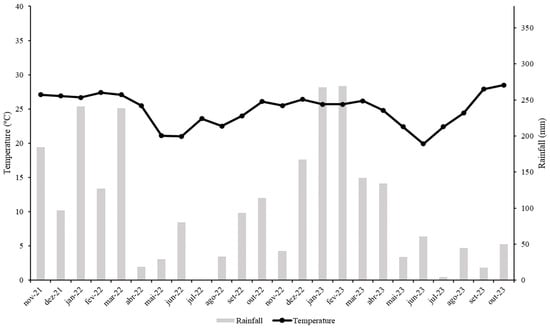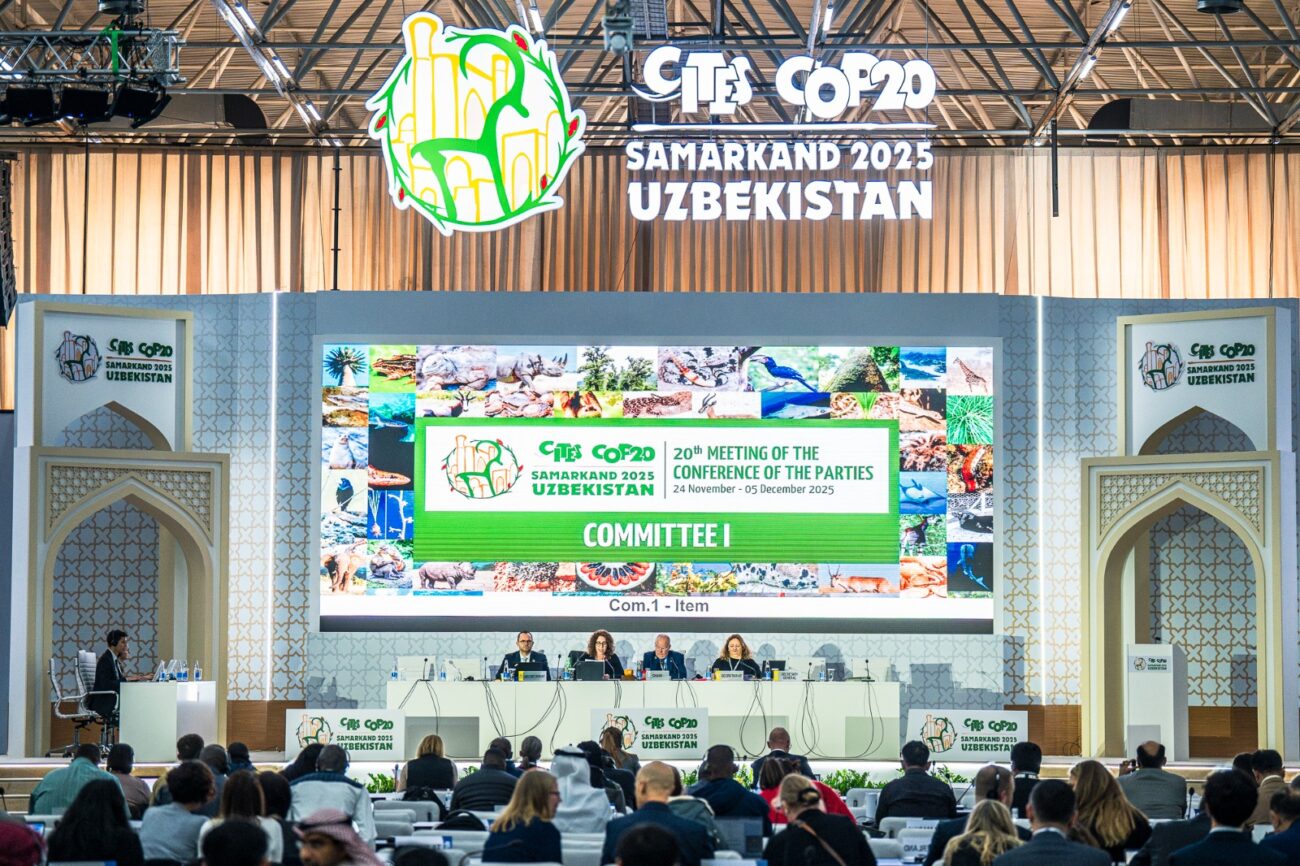1. Introduction
The increasing cultivated area and production of the soybean raised doubts about adequate nutrition and greater returns to the producer [
1]. Brazil obtained 155 million tons of soybeans in the 2022/2023 harvest, accounting for 42% of the world’s harvest [
2]. The country is responsible for around 8% of global fertilizer consumption, occupying the fourth position, behind only China, India, and the United States. Soybeans, corn, and sugarcane account for more than 73% of fertilizer consumption in the country [
3]. To achieve maximum crop production, soil fertility is one of the main factors to be monitored in production areas; after all, low productivity is due not only to low nutrient levels in the soil but also to the inadequate use of liming and fertilization, especially with N and K [
4]. After N, K is the nutrient absorbed in the largest quantities by plants, with 30% of this nutrient being exported in grains. Insufficient application of potassium fertilizer can lead to the depletion of soil reserves, and excessive application can intensify leaching losses even in soils with medium and high cation exchange capacity [
5]. In this context, optimizing the dose, timing, and source of K fertilization is essential to maximize soybean performance in Oxisols. Proper fertilizer management strategies not only increase crop yields but also contribute to cost-effective and environmentally sound agricultural practices.
In Brazil, several abundant silicate rocks can be used as sources of K in their powder form [
6], such as Ekosil (8% K
2O and 25% Si) and Potasil (12% K
2O and 25% Si). The product releases K and Si gradually, thus being able to better meet the needs of each crop, with a more homogeneous and prolonged distribution [
7]. In addition, it is known that K participates in biochemical processes, such as respiration and photosynthesis [
8], and Si promotes greater resistance to pests, diseases, and abiotic stresses [
9]. Therefore, studies about potassium have been progressively attracting interest, since approximately 80% to 95% of this nutrient consumed in Brazil is imported from other countries. Canada and Russia are the main producers of this fertilizer, whose main sources are potassium chloride (KCl)—58 to 60% K
2O; potassium sulfate (K
2SO
4)—48 to 53% K
2O; potassium and magnesium sulfate (K
2SO
4.2MgSO
4)—21 to 22% K
2O; and potassium nitrate (KNO
3) or potassium saltpeter—44 to 46% K
2O [
10]. Potassium chloride has stood out as the main imported product in Brazil due to its high concentration of K
2O, resulting in a lower cost per unit of potassium [
11]. However, after the application of this nutrient, losses due to K leaching in the soil profile can occur, in the order of 50 to 70% [
12].
Although the study focused on the doses and sources of potassium, the time of application is a crucial factor, as it is possible to fraction the dose of the nutrient, allowing the plant to make better use of the element. After all, it will be able to absorb it fractionally according to its needs, which can, consequently, improve productivity, as when the application is synchronized with the critical phenological stages, it can optimize the use of the fertilizer [
13].
The National Association for the Diffusion of Fertilizers (ANDA) revealed that more than 70% of the fertilizers used in Brazilian agriculture are imported, with the country’s largest external dependencies being potassium chloride (95%), nitrogen (80%), and phosphate (60%). This justifies the search for alternative sources of potassium, especially those that promote the recycling of this and other plant nutrients. Disbursements increased from USD 8.59 billion in 2018 to USD 24.76 billion in 2022 [
14].
Given the above, it is believed that the application of phonolite or hydrothermalized phonolite, because they slowly release K, provide Si, and do not contain Cl, may be more interesting than fertilization with KCl in the soybean/corn succession. Therefore, the objective was to verify the effect of application times and doses of alternative sources of potassium to KCl on the nodulation, productive components, and productivity of soybean in a no-tillage system in the Brazilian Cerrado, as well as to verify the reliability and agronomic efficiency of using these rock powders as fertilizers.
2. Materials and Methods
The experiment was conducted under rainfed conditions in the 2021/2022 and 2022/2023 seasons in an experimental area in the municipality of Selvíria, State of Mato Grosso do Sul, Brazil (22°25′5″ S and 51°20′30″ W), at an altitude of 335 m. The climate classification of the region, according to Köppen, is Aw, with an average annual rainfall of 1370 mm and an average annual temperature of 23.5 °C [
15]. The monthly climate data during the experiment are presented in
Figure 1.
The soil in the experimental area was classified as Oxisol, clayey texture [
16], cultivated over the last 17 years in a no-tillage system (S.P.D.) with castor beans and corn as predecessor crops.
The experiment was designed in randomized blocks in a 2 × 4 × 3 factorial scheme with four replications. The treatments consisted of two application times (30 days before soybean sowing and at the time of sowing), four K2O doses (0, 40, 80, and 120 kg ha−1), and three sources (KCl, with 60% K2O, Potasil “phonolite”, with 12% K2O and 25% silicon (3% K2O is soluble in 5% tartaric acid and 0.5% NaF), and Ekosil “hydro-thermalized phonolite/potassium rock”, 8% K2O, and 25% silicon (1% K2O is soluble in 2% citric acid), equivalent to 24 treatments. Each plot consisted of five-meter-long rows, allocated exactly in the same place in both experiments, eight rows with 0.50 m between rows, having a population of 68 thousand plants per ha, with the useful area being the four central rows.
The soybean cultivar used was TMG7063, with 18 seeds sown per linear meter. Potassium fertilization treatments were applied manually and without soil incorporation. Based on soil analysis (
Table 1), fertilization was performed with 62 kg ha
−1 of P
2O
5 using triple superphosphate fertilizer, applied below and next to the seeds, in the soybean sowing furrow. In addition, cobalt and molybdenum (CoMo) were applied in the furrow, at a dose of 150 mL ha
−1 (with 1.5% de Co and 19.5% de Mo). Conventional inoculation (dose of 75 mL of inoculant for 50 kg of seed) with
Bradyrhizobium japonicum strains SEMIA 5079 and SEMIA 5080 guaranteed that 5 × 10
9 CFU mL
−1 in fluid form was performed on soybean seeds.
At soybean flowering (R2 stage), three representative plants per plot were manually and randomly collected to determine the dry mass of nodules and the dry mass of aerial parts. After collection, the samples were placed in a forced air circulation oven at 60 °C for 72 h. After the mass stabilization, the samples were weighed. At harvest time, 10 representative soybean plants were randomly and manually sampled to obtain the number of grains per plant by manual counting; mass of 100 grains; moisture, determined on a 0.01 g precision scale, at 13% (wet basis); grain yield, determined by collecting the plants contained in the four useful lines of each plot. After mechanical threshing, the grains were quantified, and the data were transformed into kg ha
−1 at 13% (wet basis). Agronomic efficiency (
AE) was calculated with the following equation (Equation (1)):
The data obtained were subjected to preliminary tests of normality and homoscedasticity. After this, the results were analyzed using analysis of variance (ANOVA) and a Tukey test at 5% probability to compare the means of the times of application of K and potassium sources. The effect of K
2O doses was adjusted to regression equations using the SISVAR program [
18].
3. Results and Discussion
There was no significant effect (
p > 0.05) of the sources and doses of potassium fertilizers on the dry mass of nodules and dry mass of the shoot in both years of soybean cultivation (
Table 2). The sources and application times of K
2O also did not influence (
p > 0.05) the dry mass of nodules and shoots in both crops. The effect of the interaction of sources and application times of potassium fertilizers on the mass of nodules was significant in Exp I. In Exp. II, there was a significant effect of the interaction between the three factors (doses x source x application times) for the mass of nodules.
There was a significant interaction between the doses and sources of K
2O for nodule mass, with adjustment to the decreasing linear function for the KCl source, that is, the higher the dose (up to 120 kg ha
−1 of K
2O), the lower the nodule mass per plant, given that the Cl provided by the fertilizer can reduce nodulation by accumulating toxic amounts, in addition to causing competitive inhibition with NO
3− [
19], which, consequently, affects crop production. In contrast, rocks with potassium silicate allow greater absorption and accumulation of nitrogen, improving production due to the silicon present in the fertilizer [
20]. With the application of 80 and 120 kg ha
−1 of K
2O, the sources Potasil, equivalent to 666.7 kg ha
−1 and 1000 kg ha
−1, and Ekosil, equivalent to 1000 kg ha
−1 and 1500 kg ha
−1, provided higher nodule mass values compared to KCl (
Table 3), depending on the salinity (the higher the dose) [
21].
The early application of Ekosil provided a greater mass of nodules in relation to the early application of KCl; in addition, the greater mass of nodules was observed when Ekosil was applied in advance in relation to that applied at sowing (
Figure 2).
The largest nodule mass was observed under a dose of 120 kg ha
−1 of K
2O, 114% higher compared to the non-application of potassium fertilizer in soybean (
Figure 2). The increase in nodule mass because of early application of K can increase the activity of rhizobia in the root region, promoting an increase in the efficiency of biological nitrogen fixation in soybean [
22]. The greater presence of nodules in plants with an early supply of Ekosil may be related to increased nodulation, an effect previously observed under silicate fertilization in soybean, which, under the effect of Si fertilization, provided an increase in the number and mass of nodules compared to the non-use of Si [
23]. According to the authors, Potasil and Ekosil are fertilizers that provide Si, and one of the effects observed using this beneficial element in soybean plants is the increase in root growth and nodulation of soybean roots. Since Ekosil is a source of K and Si, it is possible that this source has benefited the symbiosis between
Bradyrizobium sp. and soybean plants. An increase in nodule mass was observed as the K
2O doses increased (
Figure 3).
When comparing the K
2O doses in the interaction of sources and application times. it was observed that it was significant for KCl and Ekosil at sowing and for Potasil applied in advance (
Figure 4), the use of sources with the capacity to release the nutrient for longer periods is an effective practice for agriculture [
24]. For the effect of the sources in the interaction between dose and application times, it was significant for the early form, which was higher for the Ekosil and Potasil sources at the dose of 80 kg ha
−1 of K
2O. While, for the dose of 120 kg ha
−1, it was higher only for Potasil.
Regarding the mass of soybean nodules, with the application at sowing, this variable was higher in the control treatment (dose 0 kg ha
−1) for the Ekosil and Potasil sources; for the dose of 80 kg ha
−1 of K
2O, it was positive for the sources KCl and Ekosil, while, for the dose of 120 kg ha
−1, there was significance only for the Potasil source (
Figure 4).
For the application times, in the interaction between source and dose, KCl was the source that provided the greatest mass of soybean nodules, when applied in advance at a dose of 80 kg ha
−1 of K
2O. However, Ekosil, when applied at sowing, required this same dose of K
2O. Potasil conditioned the greatest mass of soybean nodules when applied during sowing at a dose of 120 kg ha
−1 of K
2O (
Figure 4). A significant effect (
p < 0.01) was observed in the interaction between doses and sources on the mass of 100 grains and productivity in the soybean treatments (
Table 4).
A significant effect was observed for the application of Potasil in relation to the variation of the K
2O doses, with the highest mass of 100 grains when using KCl or Potasil in relation to Ekosil, obtained at the dose of 40 kg ha
−1 of K
2O (
Table 5). As observed, with the increase in the doses, the mass of 100 grains was reduced (
Figure 5a); in addition, there was no adjustment with the use of the Ekosil source (
Figure 5b). Excess K ends up competing with the absorption of Ca, which is part of the formation of the cell wall, and, Mg, the central ion of chlorophyll, like K, an important enzyme activator, which participates in grain filling [
21].
The sources and application times of K
2O did not influence (
p > 0.05) the mass of 100 soybean grains, as well as the grain yield; however, there was an adjustment to the linear regression for the soybean grain yield (
Table 6). This is due to the fact that the soil in the experimental area has an average cation exchange capacity (CEC) for tropical conditions, that is, between 45 and 100 mmol
c dm
−3 according to Cantarella et al. (2022) [
17], in addition to there not having been a high rainfall, but rather well-distributed rainfall in the rainiest months (
Figure 1).
For the interaction between application times and K
2O source, the application of KCl early stood out over the sowing fertilization when compared to the other K
2O sources. With the application at sowing, the Ekosil source was superior to the other K
2O sources (
Table 6).
The sources and application times of K
2O alone did not influence (
p > 0.05) grain yield; however, there was an adjustment to linear regression, and it was significant for agronomic efficiency. There was a significant effect (
p < 0.01) in the interaction between doses and sources on the mass of 100 grains and soybean yield (
Table 6).
The highest estimated soybean grain productivity was 3262 kg ha
−1 of grains, at the estimated dose of 78 kg ha
−1 of K
2O in the first year, and soybean grain productivity increased linearly with the increase in potassium fertilization in the second year of cultivation (
Figure 6). K has a very important physiological function in plants, improving water balance in plants, stomatal conductance, and reducing the effects of the periods of water restriction, with reduced pod and leaf abortion [
25]. As seen in
Figure 1, in Exp. II, there was a greater volume of rainfall than in Exp. I, providing more volume of water available to the crop; therefore, there is an increase in soybean grain productivity and improved production capacity in the field.
The highest agronomic efficiency, 42.73%, was observed at a dose of 40 kg ha
−1 of K
2O, both in the Ekosil and Potasil sources applied in advance and at sowing in relation to the same sources and application methods at doses of 80 and 120 kg ha
−1 of K
2O (
Figure 7); meanwhile, for KCl, it was higher at a dose of 40 kg ha
−1 of K
2O when applied at sowing. Thus, it is possible to identify the dose with the highest productive efficiency and reduce the number of fertilizers applied in soybean cultivation. On the other hand, the K
2O sources that contain Si in their formulation increased agronomic efficiency at a dose of 40 kg ha
−1, including Ekosil, when applied in advance, and Potasil, when applied at sowing. The increase in agronomic efficiency with the use of Si in fertilization was also previously reported in wheat and corn cultivation [
20] with the application of calcium and magnesium silicate, and in corn crop with the application of Nepheline syenite and phonolite sources [
26], that are Igneous rocks.
4. Conclusions
Regardless of the potassium source and time of application, the supply of 78 kg ha−1 of K2O provided greater soybean grain productivity in the first year, and there was a linear increase in soybean grain productivity in the second year, in a dryland system under no-tillage in a clayey Oxisol.
The early supply of Ekosil increased the mass of nodules compared to Potasil and Potassium Chloride. Higher doses of KCl decreased the mass of nodules per soybean plant. Ekosil and Potasil are less susceptible to leaching and have a prolonged effect on K release. They are viable options for the supply of potassium in relation to the use of KCl.
There were beneficial effects of using K2O sources associated with Si in soybean cultivation, whose early application of Ekosil, at a dose of 40 kg ha−1 of K2O, promoted outstanding agronomic efficiency of soybeans. Therefore, they possess the potential for use as an alternative source to KCl in soybean cultivation, with adequate levels of this nutrient in the soil.
By pursuing these avenues, future research can solidify our understanding of how alternative potassium sources such as Ekosil and Potasil contribute to root nodulation processes, mycorrhizal associations, and plant physiological responses. Also, life-cycle analyses should be conducted to evaluate the environmental footprint of rock-based fertilizers relative to conventional K sources.



